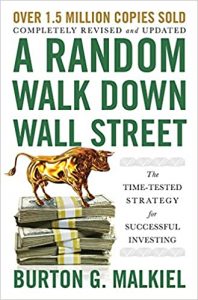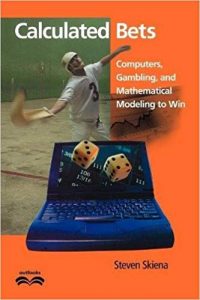Содержание

There are still many people who believe you can simply apply an indicator to a trading chart and take the signals when presented. As pointed out, to do so will not equate to a positive trading outcome. Essentially we are looking for the momentum direction on a higher time frame and looking for trades on lower time frames in the same direction.
It is sometimes necessary to increase sensitivity to generate signals. There are three versions of the Stochastic Oscillator available on SharpCharts. The Fast Stochastic Oscillator is based on George Lane’s original formulas for %K and %D. In this fast version of the oscillator, %K can appear rather choppy.
- Now, in the last box, you determine whether you want the slow or fast stochastic.
- A smoothed version (%D) moves much slower than the %K; hence, the signals generated are indicative of a stronger trend.
- Note that both charts above use the slow stochastic indicators, for the reasons already mentioned.
- Stochastic oscillators are a class of momentum indicators comparing a particular closing price of a security to a range of its prices over a certain period of time.
A bullish divergence can be confirmed with a resistance break on the price chart or a Stochastic Oscillator break above 50. The Relative Strength Index is a momentum indicator that measures the magnitude of recent price changes to analyze overbought or oversold conditions. The mechanics of the situation are such that the trend traders are buying as Apple hits support; at the same time the stochastics traders are buying the oversold reading. The key to this game is buying and selling right before everyone else does.
Stochastic Oscillator Overbought Downturn
To illustrate this example, I will be using 61.8 as the trigger for entering any new long positions. This is, of course, a play on the 61.8% Fibonacci level found throughout the market. Beyond missing out on trading profits, allowing the indicator to whipsaw you as this would also rack up pretty hefty trading commissions.
A trader might interpret a sell signal when the Stochastic is above the 80 overbought line and the %K line crosses below the %D line, sell. The first step is to decide on the number of periods (%K Periods) to be included in the calculation. The norm is 5 days, but this should be based on the time frame that you are analyzing. Only take signals in the direction of the trend and never go long when Stochastic is overbought, nor short when oversold. DojiEarlier in the article, you learned how you could use stochastic to know when the market is oversold. With this strategy, we’ll be looking to combine oversold readings with a popular candlestick pattern, called a “Doji”.
Oversold and Overbought Levels
The second line (known as %D) is a simple moving average of the %K line. Now, as with most indicators, all of the periods used within Stochastic can be user defined. That being said, the most common choices are a 14 period %K and a 3 period SMA for %D.

The Stochastic Indicator is a widely utilized momentum indicator that helps traders to gauge the strength of the current market trend. It works by comparing the closing price of a security to its price range over a specific period of time, typically a number of bars on a chart. By plotting this information as a line on a separate oscillator, traders can easily identify overbought and oversold levels that may indicate a potential trend reversal.
While momentum oscillators are best suited for trading ranges, they can also be used with securities that trend, provided the trend takes on a zigzag format. In this regard, the Stochastic Oscillator can be used to identify opportunities in harmony with the bigger trend. A bear set-up occurs when the security forms a higher low, but the Stochastic Oscillator forms a lower low. Even though the stock held above its prior low, the lower low in the Stochastic Oscillator shows increasing downside momentum. The stock formed a higher low in late-November and early December, but the Stochastic Oscillator formed a lower low with a move below 20. The subsequent bounce did not last long as the stock quickly peaked.
Low Slow Stochastic Readings Precede Lower Prices
The Stochastic Indicator can be used to confirm other technical analysis signals by using it in conjunction with other indicators and chart patterns. When the Stochastic Indicator supports the signal generated by another indicator, it can increase the confidence level of the trade. The slow stochastic has the benefit of not producing as many false signals like fast%-k since it’s smoothened by the average calculation. However, this comes at the cost of a less responsive indicator that will react slower to quick changes in price.

Technical traders can add the stochastic oscillator on top of a security’s price chart, which often appears in its own window below the price. There will typically be a horizontal line drawn at the 80 and 20 levels https://forexbitcoin.info/ of the index as well as at the mean . When the stochastic line falls below 20 or rises above 80, it produces a trading signal. Now, when experimenting with the settings, we may change the value of %K and %D.
How to set the Slow Stochastic setting in Your Trading Platform.
Moving average convergence/divergence is a momentum indicator that shows the relationship between two moving averages of a security’s price. Here are some stochastic oscillator trading strategies you may consider for Forex trading, futures, stocks, or any market of interest. In the second case, some analysts argue that %K or %D levels above 80 and below 20 can be interpreted as overbought or oversold.
When prices close in the lower half of the period’s high/low range, %K falls, indicating weakening momentum or buying/selling pressure. This chart has a few examples using horizontal support and resistance. We also see trend lines in action as well as reversal candlesticks. Make sure you look to the Stochastic crossover to see the buy and sell signals that were given while we also had technical confluence. In this example, the slow stochastic has a smoother appearance than the fast stochastic.
Yes, the Stochastic Indicator can be used to identify trend reversals by identifying overbought and oversold levels. A trend reversal may occur when the price of a security is considered overbought or oversold according to the Stochastic Indicator. Chart 5 shows Autozone with a support break in May 2009 that started a downtrend. With a downtrend in force, the Full Stochastic Oscillator was used to identify overbought readings to foreshadow a potential reversal. The shorter look-back period increases the sensitivity of the oscillator for more overbought readings. Notice that this less sensitive version did not become overbought in August, September, and October.
Far too many traders think they will need one setting for day trading, one Stochastic setting for swing trading, for scalping, for different time frames. This bullish divergence may have warned traders to exit their shortsells, traders may have interpreted that the price of gold had a strong potential of bottoming. The Kairi Relative Index is a technical analysis indicator used to indicate potential buy and sell points based on overbought or oversold conditions. pensions & investing In technical analysis, stochastics refer to a group of oscillator indicators that point to buying or selling opportunities based on momentum. In statistics, the word stochastic refers to something that is subject to a probability distribution, such as a random variable. As we’ve gone into a couple of times already, stochastics isn’t concerned with the velocity of the move, but only its position relative to the high-low range for the last period.
Futures and futures options trading involves substantial risk and is not suitable for all investors. Please read theRisk Disclosure Statementprior to trading futures products. Commodity and historical index data provided by Pinnacle Data Corporation.
The perhaps most common approach is to use stochastics to identify overbought and oversold readings, in an attempt to successfully time market reversals. In this way, the stochastic oscillator can foreshadow reversals when the indicator reveals bullish or bearish divergences. This signal is the first, and arguably the most important, trading signal Lane identified. The stochastic oscillator was developed in the late 1950s by George Lane.
Adam Hayes, Ph.D., CFA, is a financial writer with 15+ years Wall Street experience as a derivatives trader. Besides his extensive derivative trading expertise, Adam is an expert in economics and behavioral finance. Adam received his master’s in economics from The New School for Social Research and his Ph.D. from the University of Wisconsin-Madison in sociology. He is a CFA charterholder as well as holding FINRA Series 7, 55 & 63 licenses. He currently researches and teaches economic sociology and the social studies of finance at the Hebrew University in Jerusalem. In this article, we’ll uncover one of the most important and popular setups using moving averages – the golden cross.
